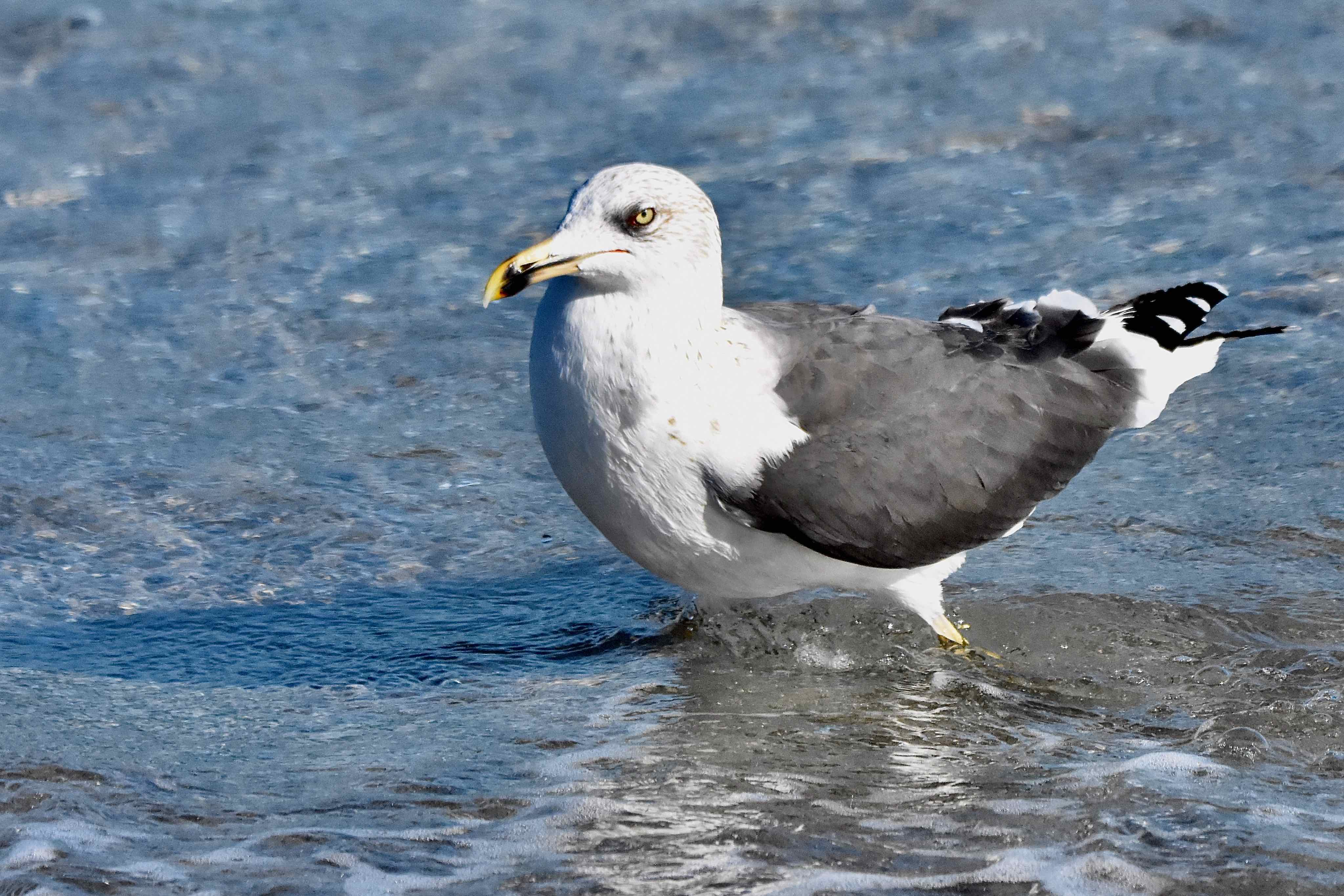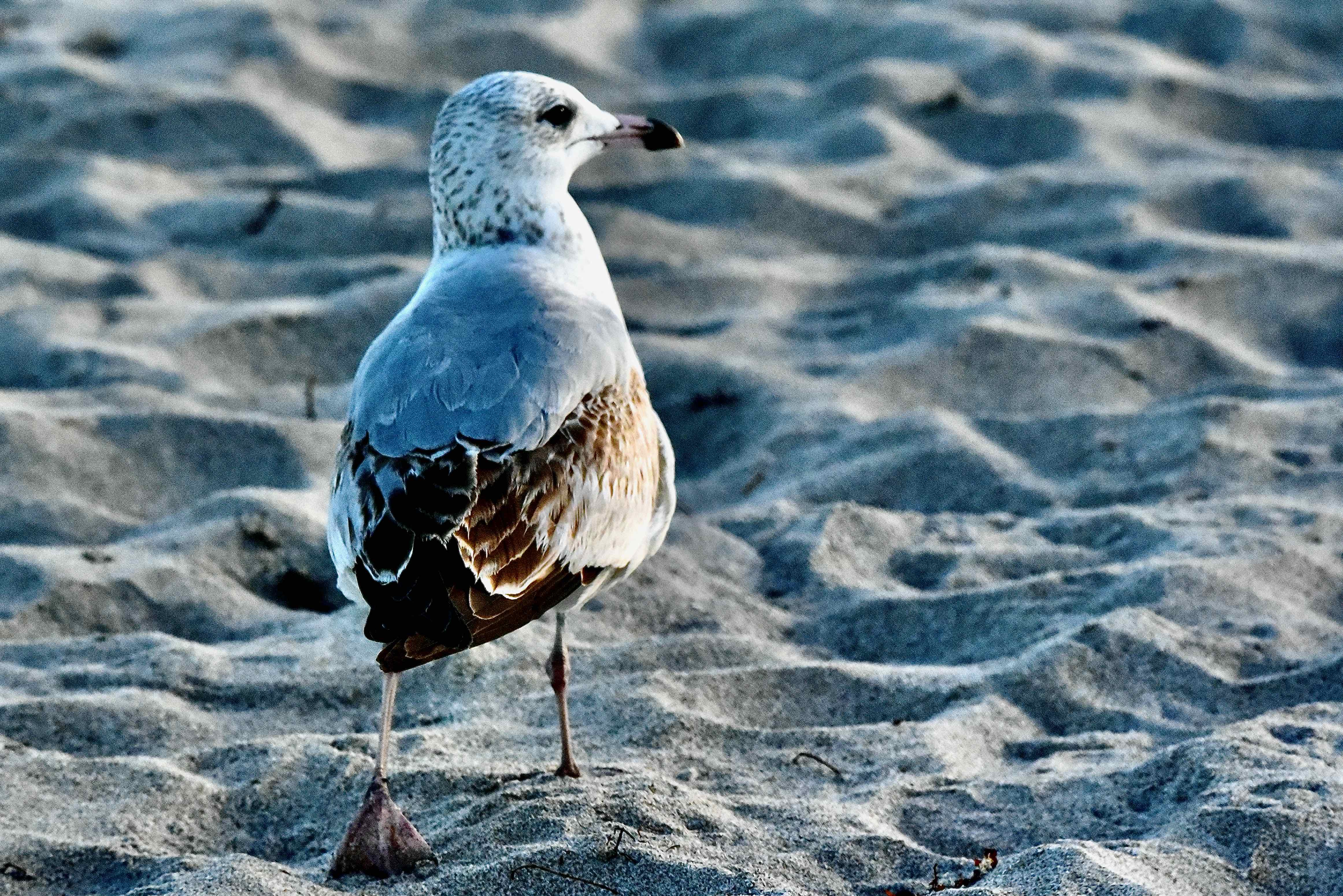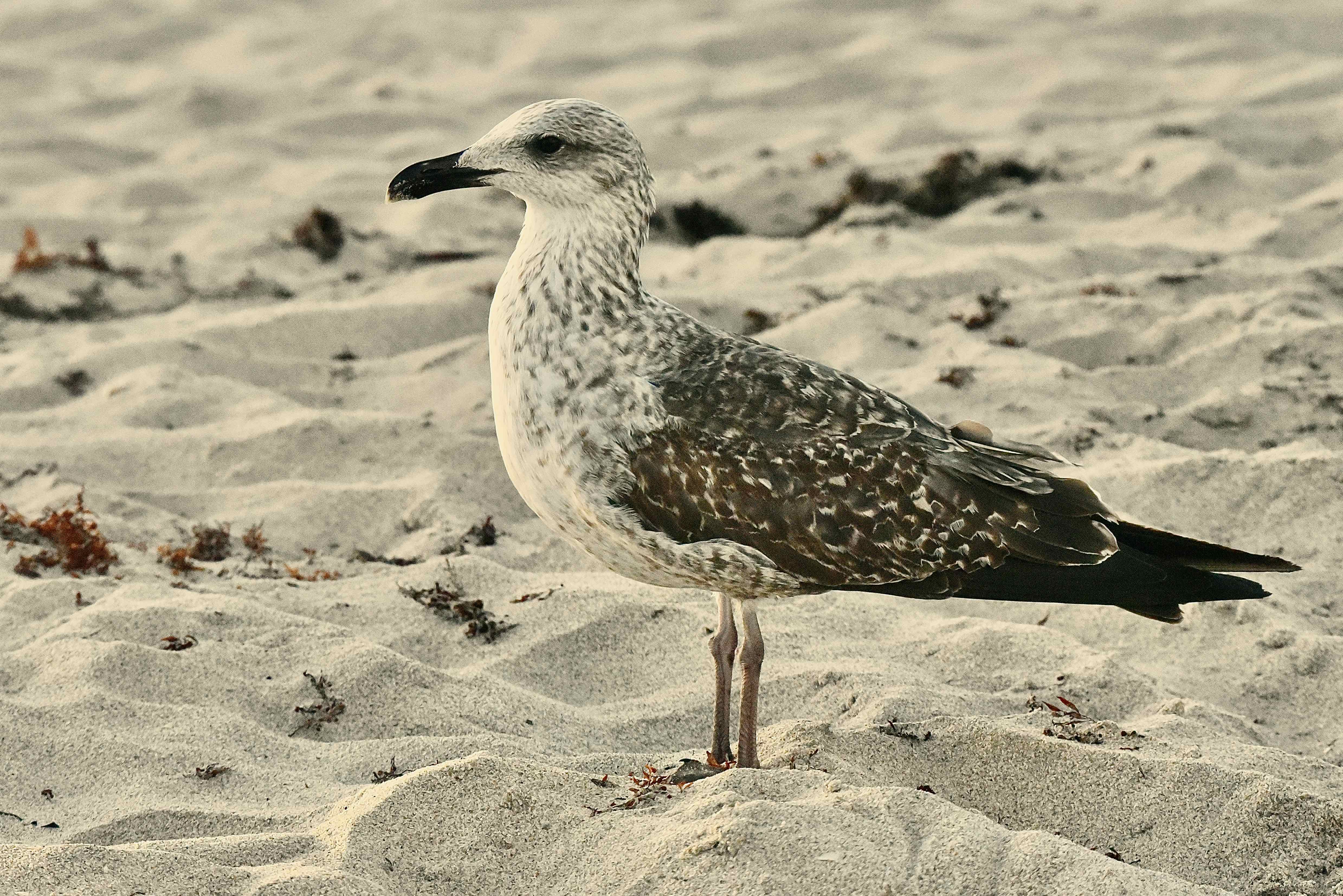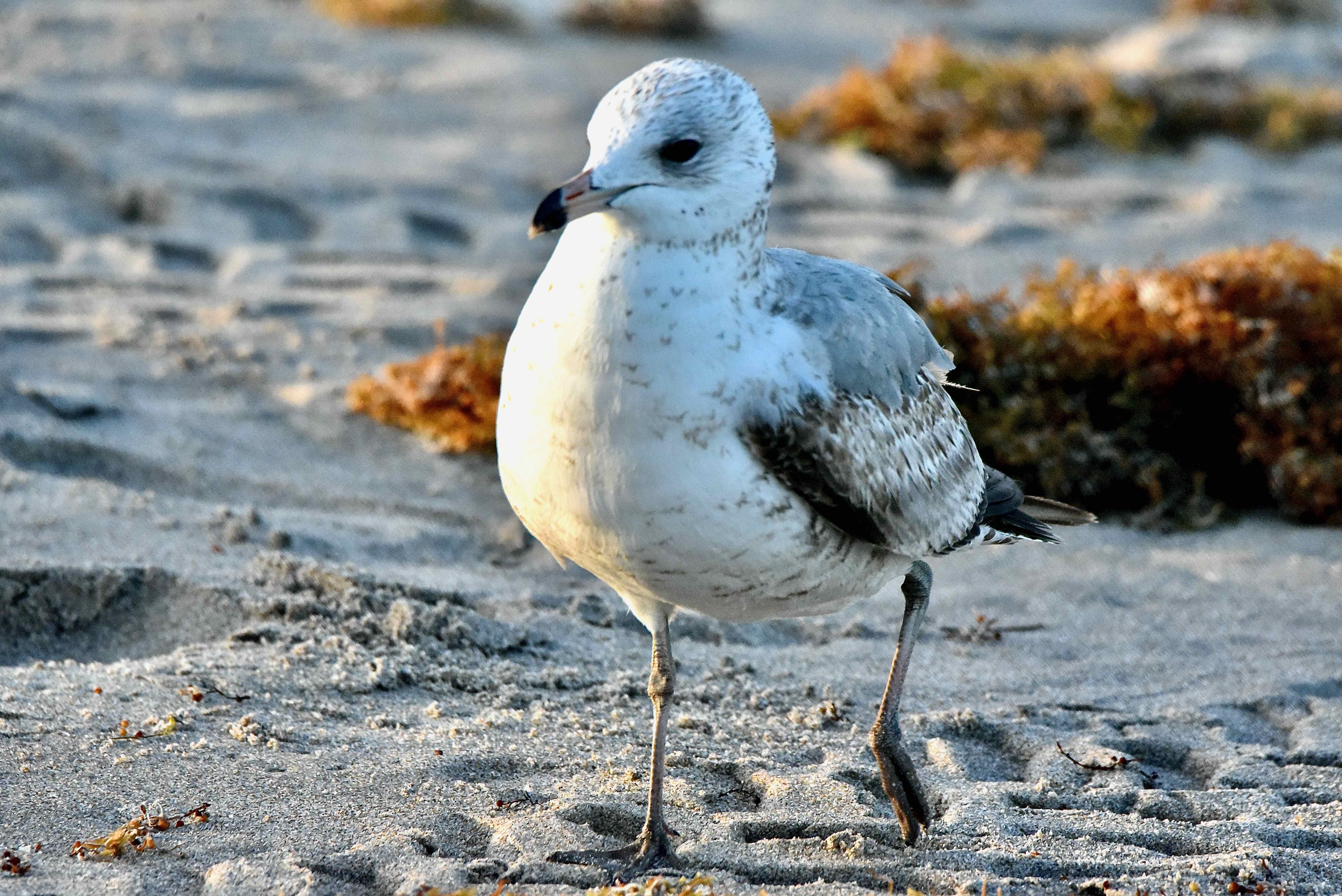
Lesser black-backed gull, photographed at Spanish River Park, Boca Raton, Palm Beach County, in December 2017.
Every now and then a European bird will create a stir in the bird-watching world when it loses its bearings or gets caught up in the winds, crosses the Atlantic and ends up on the fair shores of North America.
But it’s no big deal when the lesser black-backed gull, Larus fuscus, is spotted in the U.S., because it regularly makes the trip. In fact, it will venture from its summer haunts in Iceland, England and the European coast to spend winter as far west as Colorado and as far south as Florida and the Bahamas. Even Mexico is within this bird’s range.
Still, while not rare here, it’s not exactly a common sight in this part of Florida, either.
The lesser black-backed is a big bird as far as gulls go, with a body length between 20 and 25 inches and wingspan between 55 and 59 inches. It’s a tad smaller than its cousin, the greater black-backed, which happens to be the largest gull in the world. The looks of the two birds are almost identical, except for one easy-to-spot detail: the legs of the lesser black-backed are yellow, while the legs on the greater black-backed are pink.
The looks of the lesser black-backed are close to another gull, one commonly seen along South Florida’s beaches, the herring gull, but again, the color of the legs separates the two. The herring gull has pink legs. It’s also a much lighter shade of gray in the wings and back than than the lesser black-backed.
There are four subspecies of the lesser black-backed gull spread over western Europe, the Baltic Sea and into Russia. The one we see in North America is L.f. graellsii, scientifically speaking, and the lightest in color of the four. Its back and wings are charcoal gray; the neck, head and underparts are white with hints of brown striping. The bill is yellow with a red spot near the tip of the lower mandible; the eyes are also yellow and have a slight red ring. And as noted above, it has yellow legs.
The lesser black-backed goes through four year-long stages as it matures from juvenile to its adult form. The first year, they’re a mix of dark browns with a dark eye and dark bill. One identifying feature: a “smudge” around the eyes that help separate the lesser blacked-backed from other juvenile gulls, particularly the herring. The “smudge” remains as the bird lightens in color and transforms from mottled browns into grays and whites until it reaches full adulthood. The legs of the juveniles are flesh-colored, or pinkish, turning yellow as the bird matures. Both sexes are alike.
Lesser black-backed gulls forage by walking on mudflats or while swimming; they’ll also swoop down just above the water and “dip” into the surf to grab a meal. On the menu: fish, marine invertebrates, insects, other birds, eggs, hatchlings, carrion and garbage — they’ll hang around garbage dumps. Black-backeds also down berries and seaweed. They’ll harass and hassle other birds, including their own kind, in order to steal their food; they’ll even force them to regurgitate their catch in order to steal it.
Lesser black-backed gulls mate for life. They are colonial nesters, gathering in March along the shore in the dunes in grassy areas beyond the dunes, cliff ledges and even on buildings. The nest is a mound of vegetation — grasses, seaweed or other material — with a depression inside. Both partners build the nest. Females lay one to four eggs, typically three. Both incubate the eggs, which hatch in 24 to 27 days. The young are capable of walking about after a few days; they fledge at 30 to 40 days. They are sexually mature at four years, and may live as long as 32 years.
Lesser black-backeds were first seen in North America in the 1920s, arriving here probably from Iceland and driven westward most likely by the increasing population on the island. They’ve been spotted here in every month of the year, most frequently in winter, but there’s been no evidence that they’ve nested on this side of the Atlantic.
Lesser black-backed gulls are members of Laridae, the family of gulls, terns skimmers and skuas.
Delray Beach Municipal Beach



